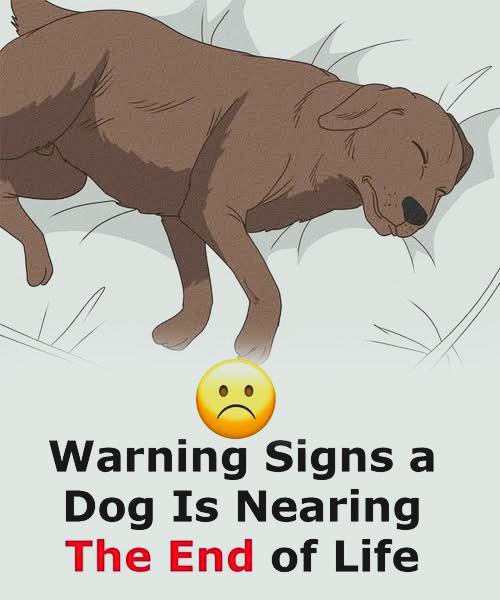11 Signs Your Dog is Nearing the End. See more…
Dogs are far more than pets — they’re our companions, protectors, and family. They fill our lives with laughter, loyalty, and unconditional love. Sadly, their time with us is all too brief, and watching them age or grow ill is one of the hardest parts of being a pet parent. Recognizing when your dog may be nearing the end of their life allows you to offer them comfort, dignity, and love in their final moments.
One of the first signs is a **decline in energy or enthusiasm** for walks and play. A once-energetic dog who now prefers to sleep or rest might be showing signs of physical exhaustion or discomfort. You may also notice **behavioral changes** — some dogs become unusually clingy, while others withdraw and seek solitude. Sudden mood shifts, confusion, or fearfulness can signal distress or illness.
As their health declines, dogs often experience **difficulty with basic bodily functions**, such as incontinence or trouble standing. **Loss of appetite and thirst** is another red flag, as it can lead to dehydration or malnutrition. Extended sleep, **vomiting, digestive issues**, or **labored breathing** may also indicate that their organs are beginning to fail. In some cases, changes in **gum color**, such as pale or bluish tones, point to oxygen or circulation problems.
You might also observe **unusual body odor**, **skin changes**, or a **lack of interest in favorite activities**. These subtle shifts reflect their body and mind beginning to slow down.
While it’s heartbreaking, recognizing these signs gives you the chance to make their final days gentle and full of love. Provide a peaceful environment, keep them warm and comfortable, and consult your veterinarian for guidance. Above all, spend time by their side — speaking softly, stroking their fur, and reminding them how deeply they are loved.
Our dogs give us a lifetime of devotion; in their final journey, they deserve nothing less than our compassion, care, and gratitude. ❤️





Post Comment